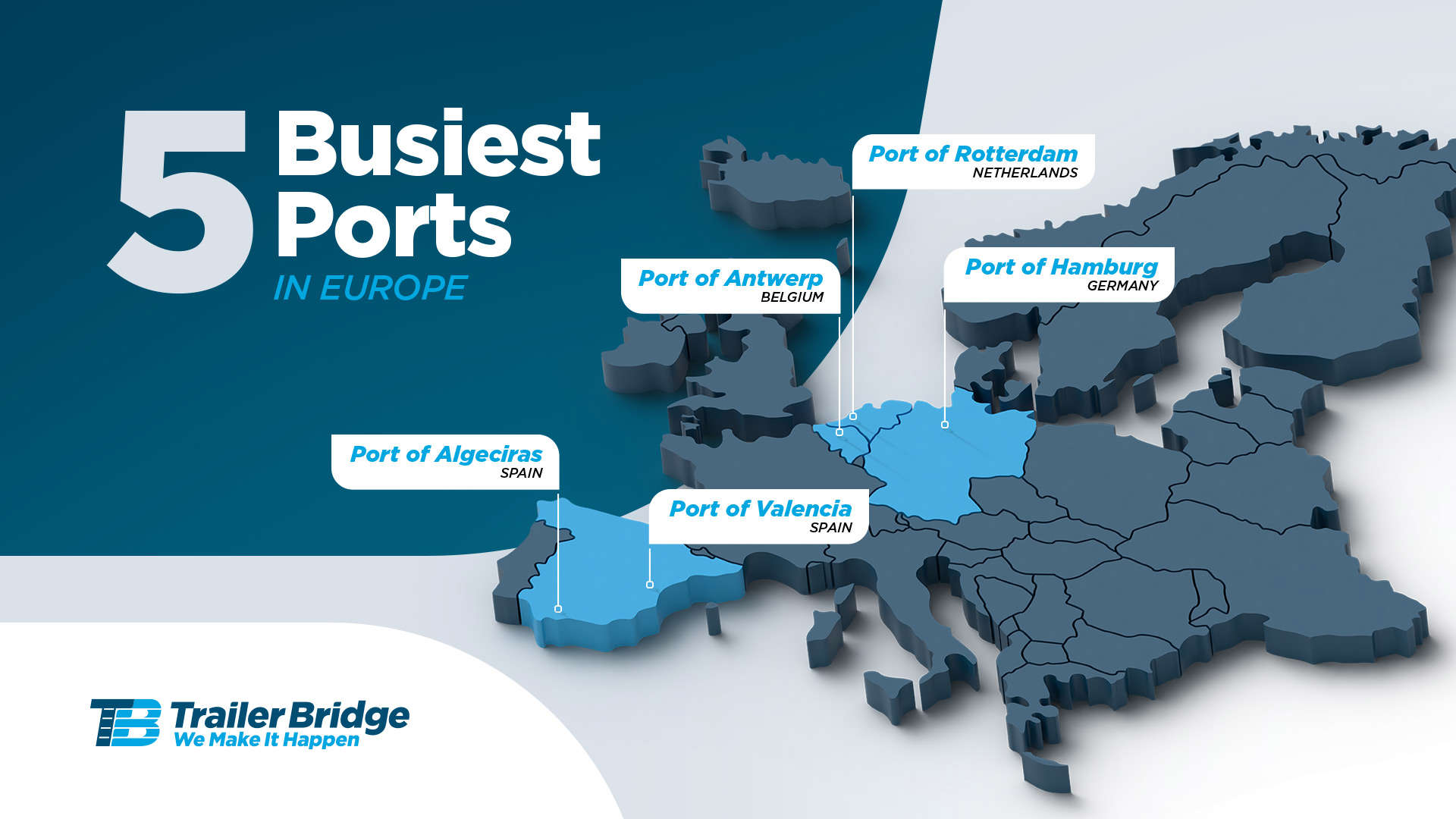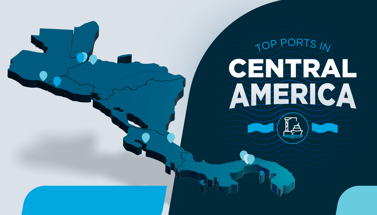
Five Busiest Ports in Europe
Europe, with a vast coastline and rich maritime history, is home to some of the busiest and most efficient ports in the world. These ports play a critical role in global trade, serving as key hubs for the movement of goods between continents.
The EU accounts for around 14% of the world’s trade in goods with the US being the largest destination for EU exports of goods in 2023. If you’re looking to conduct business in Europe or with partners on this continent, you’ll undoubtedly engage with one of its bustling seaports. These ports are integral to the continent’s industrial growth and consumer market expansion.
Here are five of the busiest ports in Europe, ranked by their annual cargo tonnage:
1. Port of Rotterdam, Netherlands
The Port of Rotterdam is not only the largest port in Europe but also one of the busiest ports in the world, handling more than 438 million tons of cargo annually. Its strategic location and extensive infrastructure make it a critical hub for global trade. With a draft depth of 24 meters (78.74 feet), the port can accommodate the largest ships making it a major gateway for goods entering and leaving Europe.
The port is a vital center for the transportation of energy products, such as crude oil and natural gas, and is the largest petroleum port in Europe. Additionally, it handles dry bulk cargo, including coal, ore, scrap metal, and more specialized project cargo, breakbulk, and automotive shipments.
The port employs advanced automation technologies, such as robotic cranes and automated guided vehicles (AGVs), to enhance efficiency in container handling, bulk cargo, and liquid bulk.
2. Port of Antwerp, Belgium
The Port of Antwerp is the second-largest port in Europe, with an annual cargo volume of approximately 235 million tons. Its strategic inland location and multimodal connectivity, with road, rail, and inland waterway links, ensures seamless transportation of goods to and from the hinterland, reinforcing its role as a key transit point in Europe.
Following its merger with Zeebrugge, the Port of Antwerp-Bruges boasts deep-water berths, extensive drydock facilities, and a pipeline network for the chemical and petrochemical industries. It is a key hub for containerized cargo as well as breakbulk cargo specifically steel, forest products, and fruit.
3. Port of Hamburg, Germany
Handling approximately 114.3 million tons of cargo annually, the Port of Hamburg is Germany’s largest port, specializing in handling bulk cargo, including ore, coal, building materials, grain, fertilizers, and mineral oil products. Its capacity for managing these diverse commodities makes it a vital part of both national and international trade networks.
Often referred to as Germany’s “Gateway to the World,” the port’s strategic location along the Elbe River facilitates extensive warehousing and transshipment operations. The port also supports a thriving logistics industry, significantly contributing to the regional economy.
Hamburg’s success lies in its balance between imports and exports, crucial for the stability and efficiency of global supply chains. This balance ensures a steady flow of goods, making it a reliable and predictable hub for international traders and logistics companies. As of the first half of 2024, the U.S. overtook China as Germany’s largest trading partner, further emphasizing the port’s role in fostering crucial international trade relationships.
4. Port of Algeciras, Spain
Handling about 109 million tons of cargo annually, the Port of Algeciras is one of the busiest ports in the Mediterranean and a key transshipment hub for Europe, Africa, and the Americas. Located near the strategic Strait of Gibraltar, it serves as a gateway for international trade, connecting the Mediterranean with the Atlantic. As the largest port in Spain and the second largest in the Mediterranean, Algeciras handles a diverse range of cargo, including steel, chemicals, and wet bulk, highlighting its vital role in global logistics.
5. Port of Valencia, Spain
Handling more than 70 million tons of cargo annually, the Port of Valencia is the busiest container port on the Mediterranean Sea and the fifth busiest in Europe. It serves as a crucial link between Europe and Asia, Africa, and the Americas, thanks to its strategic location and advanced facilities.
With strong connectivity to major shipping routes and modern infrastructure, the port efficiently handles a wide range of cargo types, including solid and liquid bulk, roll-on/roll-off (ro-ro), and containerized goods. It manages diverse products such as textiles, agricultural items like grain and beverages, and construction materials and machinery. Employing over 15,000 people and servicing more than 7,500 ships annually, it also plays a significant role in the regional economy.
Connecting to European Markets with Ocean Shipping
As one of the world’s largest exporters of manufactured goods and services, Europe serves as a primary hub for world trade. Ocean shipping is pivotal in maintaining Europe’s competitive global edge by enabling cost-effective imports and exports, supporting economic growth, and allowing European businesses to access international markets.
Connectivity between the US and Europe is made possible through many of the ports along the US East Coast including Port of New York, New Jersey, Port of Charleston, and the Jacksonville Port Authority. These strategically located ports offer shippers a variety of transportation methods to efficiently move freight throughout the US.
Shippers with freight moving to/from Europe should consider partnering with an experienced freight forwarder or NVOCC to develop a full supply chain solution that prioritizes cost efficiencies as well as a routing option that meets the needs of your business.






